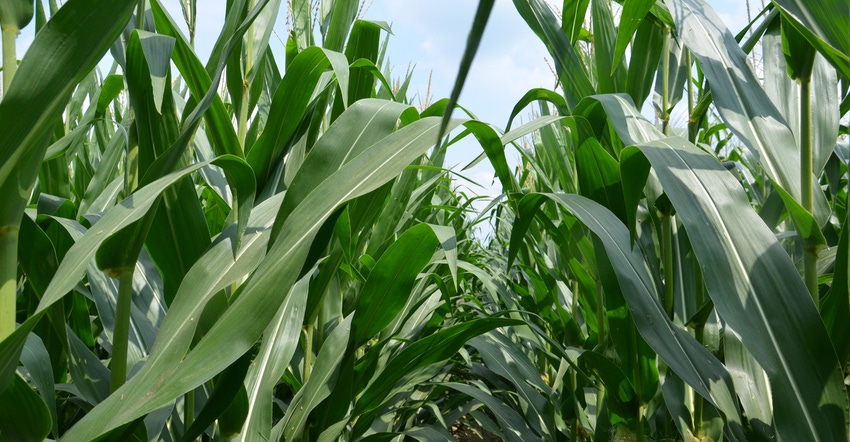May 29, 2018

By Jesse Grogan
I was asked to list and comment on the top 10 things I look for when walking test plots in July. This assumes corn has pollinated and produced ears by that point.
Here are my top 10 factors to compare among hybrids.
1. Yield and consistency. A hybrid plot is great for getting familiar with a hybrid and comparing it to others. However, yield from a single plot should not be a deciding factor. Hybrid candidates for next year’s crop should be planted at several sites on the farm to measure consistency. Yield performance over years should be evaluated with public or private testing data. It’s important to have performance from several years across many locations, if possible.
2. Stalk quality, root integrity and green snap. Look for ability to stand for an efficient harvest and to minimize harvest losses. You may begin to get clues even in July.
3. Early-season emergence and vigor. It’s important to have an even and vigorous stand early in the season. Choose hybrids with good early vigor.
4. Late-season stay green. Hybrids with late-season stay-green power are usually heathier and have the ability for nutrient uptake after flowering. That is important for top yields.
5. Transgenic trait options. Choose trait options that are effective for insect and weed control as desired. You should get an indication of how these traits are working as you compare hybrids in plots. You may also notice hybrids that don’t have corn borer traits could be infected by the insect.
6. Disease tolerance. Choose hybrids that have protection for major corn fungal diseases such as gray leaf spot, northern corn leaf blight and southern rust. Select hybrids that are not susceptible to diplodia or gibberella ear rot. Pay attention to disease lesions on various hybrids as you scout. Which diseases are present, and how high are they up the plant? Are they on the ear leaf?
7. Stress mitigation. Select hybrids that can tolerate drought or adverse weather conditions. Of course, any hybrid has its limits. This was apparent in 2012 during the long, hot, dry summer.
8. Hybrid maturity. Select hybrids that are adapted to your region. Some growers need hybrids that dry down in the field, thus requiring earlier maturity. You should be able to get a handle on maturity as you compare ear development between hybrids in a plot in July.
9. Grain quality. High-quality grain from adequate test weight and kernel hardness is often preferred for better grain handling and storage. Good husk cover prevents moldy ear tips from exposed grain. By July, hybrids should be showing tendencies such as how tightly husks will cover ears, if ears will be held upright and if ear tips could be exposed.
10. Grain shelling quality. Hybrids should hold grain on the cob for harvest and shell easily in the combine. Avoid hybrids where grain falls from ears on contact or has a soft cob that will break apart in the combine.
Grogan is an agronomist with Ag Reliant Genetics based in Lafayette, Ind. He is also an Indiana certified crop adviser. Tom J. Bechman contributed to this story.
You May Also Like




